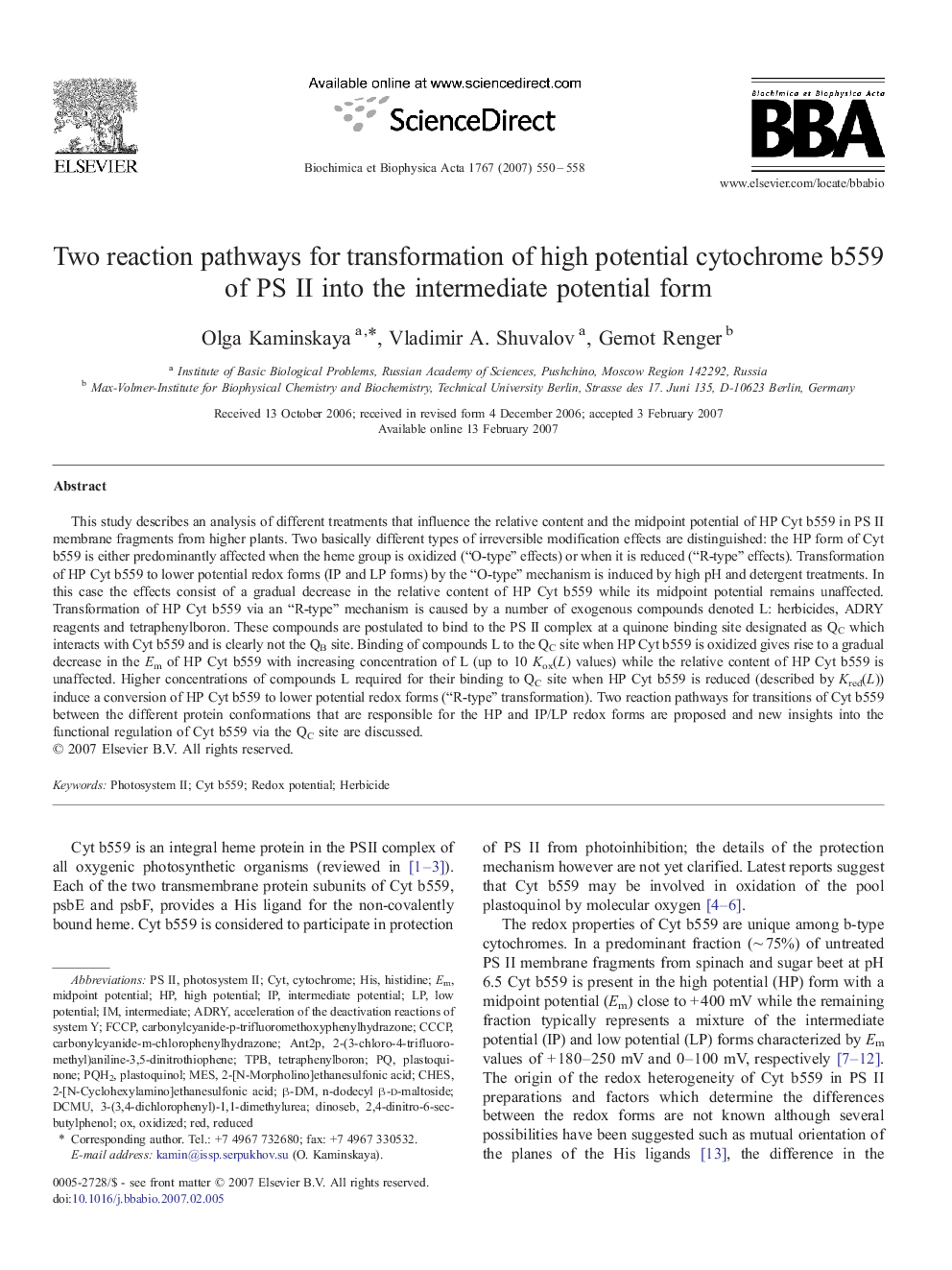| Article ID | Journal | Published Year | Pages | File Type |
|---|---|---|---|---|
| 1943557 | Biochimica et Biophysica Acta (BBA) - Bioenergetics | 2007 | 9 Pages |
This study describes an analysis of different treatments that influence the relative content and the midpoint potential of HP Cyt b559 in PS II membrane fragments from higher plants. Two basically different types of irreversible modification effects are distinguished: the HP form of Cyt b559 is either predominantly affected when the heme group is oxidized (“O-type” effects) or when it is reduced (“R-type” effects). Transformation of HP Cyt b559 to lower potential redox forms (IP and LP forms) by the “O-type” mechanism is induced by high pH and detergent treatments. In this case the effects consist of a gradual decrease in the relative content of HP Cyt b559 while its midpoint potential remains unaffected. Transformation of HP Cyt b559 via an “R-type” mechanism is caused by a number of exogenous compounds denoted L: herbicides, ADRY reagents and tetraphenylboron. These compounds are postulated to bind to the PS II complex at a quinone binding site designated as QC which interacts with Cyt b559 and is clearly not the QB site. Binding of compounds L to the QC site when HP Cyt b559 is oxidized gives rise to a gradual decrease in the Em of HP Cyt b559 with increasing concentration of L (up to 10 Kox(L) values) while the relative content of HP Cyt b559 is unaffected. Higher concentrations of compounds L required for their binding to QC site when HP Cyt b559 is reduced (described by Kred(L)) induce a conversion of HP Cyt b559 to lower potential redox forms (“R-type” transformation). Two reaction pathways for transitions of Cyt b559 between the different protein conformations that are responsible for the HP and IP/LP redox forms are proposed and new insights into the functional regulation of Cyt b559 via the QC site are discussed.
